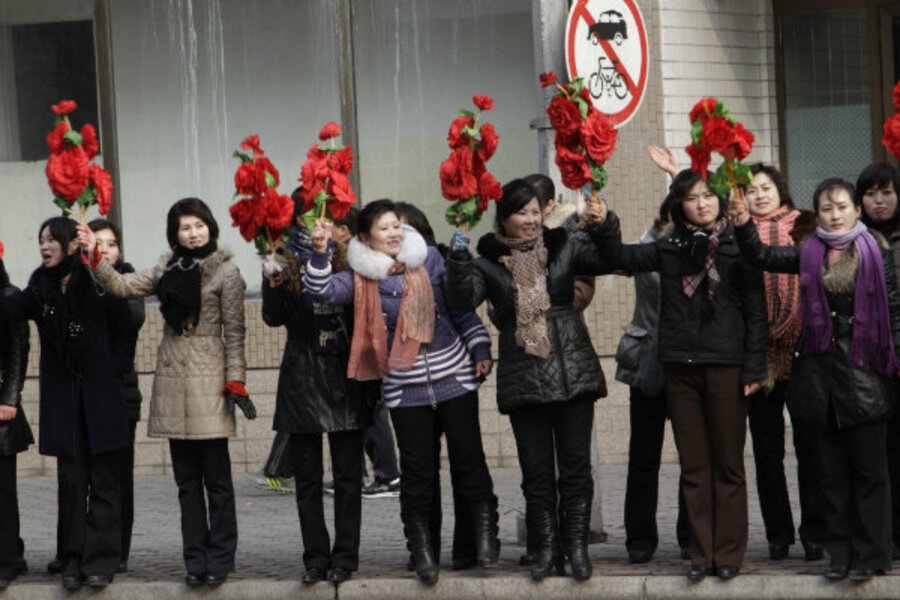US leadership needed to prevent nuclear testing by North Korea
Loading...
| Washington
Four years ago, President Obama warned that “the threat of global nuclear war has gone down, but the risk of a nuclear attack has gone up.” Last week, North Korea’s nuclear weapons test explosion – its third and the world’s 2,053rd – underscored the urgent need for stronger barriers to prevent the testing, spread, and use of the world’s most dangerous weapons.
In his first term, Mr. Obama made significant progress to reduce nuclear dangers. This included cuts in excess US and Russian cold-war nuclear stockpiles and locking up vulnerable nuclear material from terrorists. But there is more to be done.
US leadership is especially critical to the implementation of the 1996 Comprehensive Nuclear Test Ban Treaty (CTBT), which bans all nuclear test explosions. The United States and 183 other nations have signed the test-ban treaty, but America must still ratify the treaty to bring it into force.
The US has not conducted a nuclear test explosion for more than 20 years. Since there is no technical or military need to do so ever again, ratifying the treaty would not hinder US nuclear readiness. Other countries like North Korea, or even China, however, could use further nuclear tests to perfect more sophisticated and deadly warhead designs. US ratification of the treaty would send a clear message to nuclear capable countries like Pakistan, India, and North Korea that are not signatories. And it would establish a clear norm for countries like China and Iran that have both signed, but not ratified, the treaty.
During his first term, Obama repeatedly pledged to work with the Senate to secure US ratification of the test-ban treaty. Now is the right time for the White House to launch a high-level push for ratifying the treaty and for the Senate to join in closing the door on nuclear testing.
US ratification of the test-ban treaty would increase the global leverage necessary to curtail North Korea’s nuclear weapons program and help deter Iran’s leaders from pursuing a nuclear weapon. Completing work on the treaty would also reduce nuclear tensions between India and Pakistan and between India and China, and enhance security and stability throughout Asia.
US leadership on the treaty would also build support to strengthen the beleaguered nuclear nonproliferation system. At the 2010 conference to review the nuclear Nonproliferation Treaty, the 189 member states unanimously reaffirmed the vital importance of entry into force of the test-ban treaty “as a core element of the international nuclear disarmament and non-proliferation regime.”
Like any treaty-ratification effort, securing Senate approval will be tough, but is within reach. The Senate’s approval of the New START treaty (a nuclear arms reduction agreement between the US and Russia) in December 2010 shows that the White House and the Senate can work together when US national security interests are at stake.
The case for the test-ban treaty is stronger than ever. Since the treaty was last considered in 1999, substantial investments in the US nuclear labs and scientific advances in nuclear weapons science mean that we know more now about how to sustain the arsenal than years ago when the US conducted nuclear tests.
Critics oppose US treaty ratification because they say the treaty is unverifiable – that signatory countries may cheat, and that their actions are largely unknown. But today, the treaty’s global nuclear test monitoring system is now more than 85 percent complete and is more capable than anticipated a decade ago. US intelligence and test monitoring tools are highly effective, as their rapid reporting on the North Korean test showed.
When the treaty enters into force, the US and other states will have an additional tool to deter potential testing: short-notice, on-site inspections to investigate any suspicious events. With the treaty in place, no would-be proliferator could be confident that a nuclear explosion of any military utility would escape detection.
The treaty can also be enforced by action from the UN Security Council. The Security Council found unanimously at a summit-level meeting in January 1992 that nuclear proliferation is a threat to world peace and security. If a signatory country violated the nuclear testing ban, action to enforce the treaty could include sanctions and use of force if authorized. If that action were to be vetoed, treaty members would be free to act individually in response, including resuming testing if they believed it was necessary.
Beginning with Dwight Eisenhower, US presidents have sought an end to nuclear testing. It has been a half-century since President John F. Kennedy sought to negotiate a comprehensive test ban but achieved only the Limited Test Ban Treaty. A quarter century has passed since Presidents Ronald Reagan and George H. W. Bush secured the ratification of the treaties banning high-yield test explosions and so-called “peaceful” nuclear explosions.
Today, the United States is acting within the framework of the responsibilities of the Comprehensive Test Ban Treaty but is not reaping the full security benefits in return because it has not yet ratified the pact. As Obama said in 2009: “After more than five decades of talks, it is time for the testing of nuclear weapons to finally be banned.”
Ambassador Thomas R. Pickering helped to draft the Kennedy Comprehensive Nuclear-Test-Ban Treaty and served as US ambassador to the United Nations, the Russian Federation, India, Israel, El Salvador, Nigeria, and Jordan.







